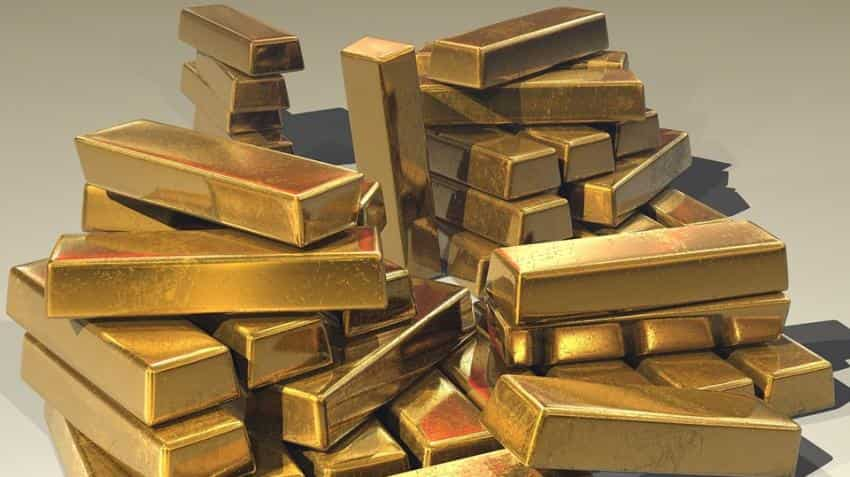Gold steadies as Syria strike fears fade
A retreat in the dollar kept the metal firmly underpinned, however. Prices have trended sideways since January, buoyed by geopolitical worries but capped by expectations for further U.S. interest rate hikes and strong technical resistance at $1,360-$1,365 an ounce, their January, February and April highs.

Gold steadied on Monday, surrendering gains made in earlier trade on the back on this weekend`s air strikes on Syria, as financial markets wagered the latest U.S.-led intervention would not escalate into a wider conflict.
A retreat in the dollar kept the metal firmly underpinned, however. Prices have trended sideways since January, buoyed by geopolitical worries but capped by expectations for further U.S. interest rate hikes and strong technical resistance at $1,360-$1,365 an ounce, their January, February and April highs.
Spot gold was at $1,344.34 an ounce at 0930 GMT, little changed from late on Friday but off an earlier peak of $1,348.69. U.S. gold futures were 0.1 percent lower at $1,346.80 an ounce.
Forces from the United States, Britain and France pounded Syria with air strikes early on Saturday, hitting three of Syria`s main chemical weapons facilities.
However, investors shed safe-haven assets and oil prices plummeted on Monday on expectations the attacks would not mark the start of greater Western involvement in the conflict.
"Some of the risk (premium) has come down following the air strikes," Capital Economics analyst Simona Gambarini said. "Some market participants were thinking that maybe there could be an escalation of the tensions, but that has not happened and therefore prices have come down a bit."
"If you consider that the Fed is tightening we should see lower gold prices. Instead, they have been moving sideways," she said. "There is certainly some risk premium incorporated into prices ... but there is no trigger for higher prices at the moment."
Speculators raised their net long positions in COMEX gold contracts by 363 contracts to 138,212 contracts in the week to April 10, U.S. Commodity Futures Trading Commission (CFTC) data showed on Friday.
Gold remains under pressure, however, after failing to break through chart resistance last week, dealers said.
"On Wednesday we had that breakout above $1,360 and it just went nowhere afterwards. That was really, really disappointing," ING analyst Oliver Nugent said. "The money is just waiting on the sidelines."
Dealers trimmed their short positions in silver by 3,187 contracts to 36,417 contracts, the CFTC data showed.
Silver was down 0.1 percent at $16.61 an ounce, while platinum was flat at $927.30 an ounce.
Palladium was 0.2 percent higher at $988.70 an ounce after hitting a three-week high of $990.50 on Friday.
Prices rose 9.6 percent last week, their biggest weekly gain in more than a year, as concerns that supply from number one producer Russia could be disrupted by U.S. sanctions fed into a strong technical rebound following the metal`s 20 percent fall from its January record high.
03:24 PM IST






 Gold price jumps 1 pct on safe-haven appeal, but still this happens - set for drop
Gold price jumps 1 pct on safe-haven appeal, but still this happens - set for drop Gold options hit an all-time high, emerge as most capital-efficient insurance tool
Gold options hit an all-time high, emerge as most capital-efficient insurance tool Gold falls 1 pct as global stimulus hopes boost risk assets
Gold falls 1 pct as global stimulus hopes boost risk assets Gold price outlook: Motilal Oswal says yellow metal to breach Rs 47,000 per 10 grams levels
Gold price outlook: Motilal Oswal says yellow metal to breach Rs 47,000 per 10 grams levels Gold price hits record high! Global markets jittery, Brent down 3% on Coronavirus fears
Gold price hits record high! Global markets jittery, Brent down 3% on Coronavirus fears